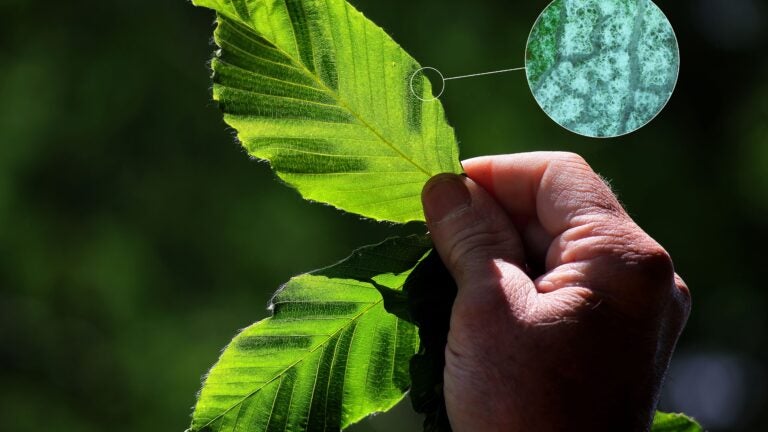Gardening
Plus, what to do on your property this week. Send comments and questions to [email protected].
Greetings, fellow gardeners, and welcome to my inaugural Ask the Gardener column! I aim to provide green guidance based on your questions and help connect readers with the benefits of a close relationship with the plants in our gardens and in our daily lives.
First, I’d like to tell you about my gardening journey. Little did I know the influence that strong women would have on my career, but the time I spent in the gardens of my grandmother and mother proved formative experiences for a budding horticulturist. A loving thank you to my matriarchs is due for revealing to me the wonders of the natural world.
Not everyone finds their passion at a young age; however, I feel continually blessed to pursue a profession I deeply believe in and love. That drive to be infinitely curious, embrace patience, and learn from my mistakes (believe me, every expert has made mistakes) has guided me through a successful career in public gardens now spanning 23 years and counting. I have held positions at the US National Arboretum in Washington, D.C., Wave Hill Public Garden in the Bronx, N.Y., and Brooklyn Botanic Garden in New York City. I now serve as director of horticulture at Native Plant Trust in Framingham.
I am honored to be stepping in as the writer of The Boston Globe’s Ask the Gardener column. The writers before me inspired the region with troves of experience and knowledge. Carol Stocker established the high standards of this column over many years, and R. Wayne Mezitt’s untimely passing left the horticulture world bereft of an eloquent and generous garden statesman. I have always enjoyed speaking to folks about their gardens and have been known to strike up and carry on lengthy gardening conversations at the grocery store, beach, and even at my children’s birthday parties. I hope this will be an opportunity to both field your questions as a gardener and help cover new ground by introducing fresh ideas from the field.

Now that you know a bit about me, dear readers, let us explore some tips and answers regarding horticulture in early September. While it is tempting to sit with a tall glass of iced tea and watch as the cultural end of summer approaches, gardeners still have lots to do this week. Between back-to-school tasks, I am keeping up on garden editing, especially not letting those annual weeds go to seed and thinking about my fall bulb orders. This year, I am focusing on adding more diversity to my lawn with minor bulbs and native perennials. Crocus, snowdrops, and glory-of-the-snow, along with pussy toes, violets, and wild strawberries, are excellent choices. These plants add beauty and floral resources for our earliest emerging pollinators in the spring.
Unfortunately, gardening can’t always be about the newest garden additions and their beneficial relationships: We must confront severe issues like pests and diseases. Several readers have submitted questions seeking more information about beech leaf disease. This is a new and impactful threat to our region’s forests, on par with hemlock woolly adelgid, emerald ash borer, and the Asian longhorn beetle. The organism responsible is a microscopic worm or nematode (Litylenchus crenatae). Sophie Hartley’s excellent article “In New England, a tree-killing worm may spell the end of autumn’s yellow hues” from June in The Boston Globe contains essential information about the causes, progression, and potential treatments for this new threat:
“In highly infested areas, the disease can kill up to 90 percent of young trees in two to five years, and it spreads at an almost unprecedented rate. … Sometimes solitary trees can be saved, but in densely wooded areas, the nematode seems to be unstoppable. Researchers call beech leaf disease one of the most infectious forest diseases the country has ever seen. And there aren’t weapons for effectively fighting back, at least not yet.”
The Massachusetts Department of Conservation & Recreation has further details and information on how to report sightings at https://rb.gy/sygy7z (We’ve shortened the URL for you.) Beech leaf disease manifests itself as dark green, diagonal banding on the leaves.
Equally important are sightings of resistant or marginally affected trees. These individuals are valuable for identifying natural resistance and are sought after by researchers. Preserving local adaptation is part of a more significant effort to promote resilient gardens and landscapes in the face of climate change and ongoing biodiversity loss.
So what are we to do in the meantime? The approach for natural communities will differ from those for parks and gardens specimens. Any treatments should be conducted by trained, professional arborists. Prioritize risk management for areas near homes and public spaces; lamentably, if tree removal is warranted, think of it as an opportunity to plant something new, preferably a native tree with longevity and high ecological value.
Our forests and gardens are dynamic systems ever shifting and changing on a grander timescale. We should do all we can to keep veteran trees in our gardens while planting new trees with an eye to a more balanced future.
Ulrich Lorimer is the director of horticulture at the Native Plant Trust in Framingham. Send your gardening questions, along with your name/initials and hometown, to [email protected] for possible publication. Some questions are edited for clarity.
Address newsletter
Get the latest news on buying, selling, renting, home design, and more.
